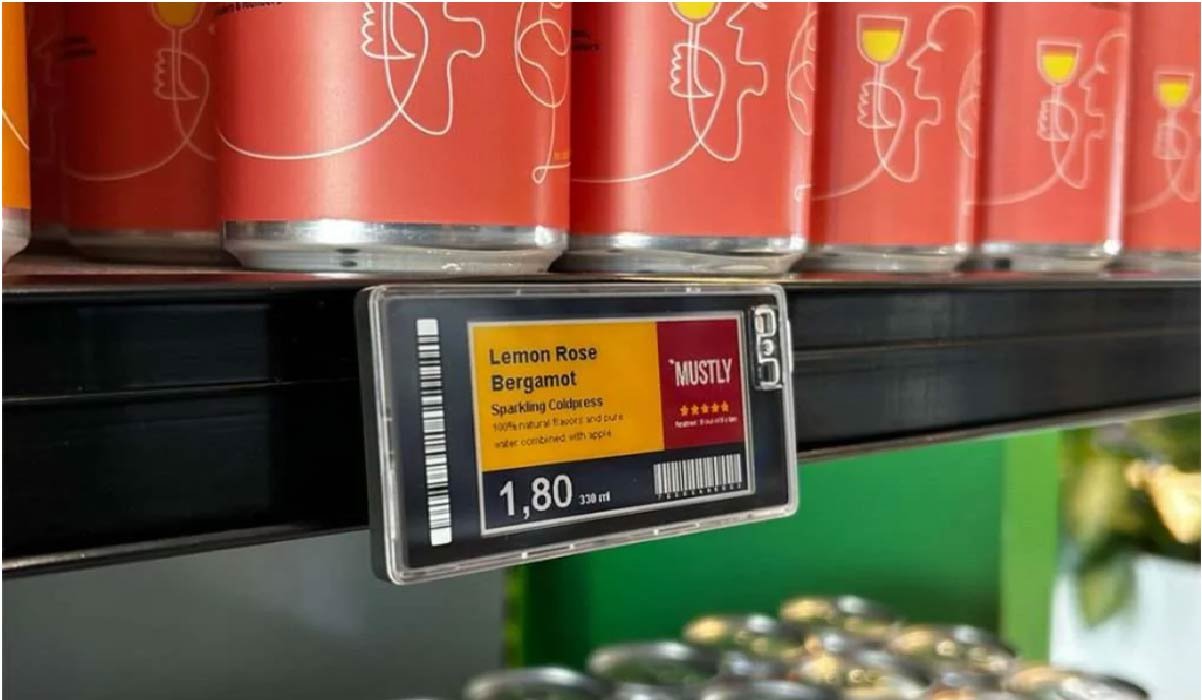Tech
Exploring Retail IoT: The Future of Shopping with Electronic Shelf Labels

Current and emerging retail environments in particular are evolving dramatically and rapidly, primarily due to advances in IoT technologies that link tools, information, and operations. Of these technologies, ESLs have quickly become one of the fundamentals of the Retail IoT movement. ESL solutions are the opportunities for retailers to make their businesses more efficient, improve the customer experience and respond to the growing trends of e-commerce. This article focuses on how [ESLs] introduced by the leading electronic shelf label companies are impacting the retail of tomorrow.
Revolutionizing Price Management
Due to the functions and features of ESLs, price management is one of the most vital strategies that any retailer who wants to remain relevant must consider .
– Dynamic Pricing Implementation: ESLs facilitate dynamic pricing, a method by which retailers can change prices in response to other factors such as demand, competitor actions or stock availability. This agility means that the price strategies are always the most effective.
– Error-Free Pricing: This method of changing prices involves a lot of manual work hence it is very susceptible to making wrong changes and in the process they are very expensive to the customers and also they bring a very huge loss to the companies. The ESL solutions have the flexibility of automatically ensuring the same price for a product is consistent across the different contacts.
– Promotional Agility: The retailers can start and stop the promotion as they feel, so the chances of making even more sales are achieved and the occurrences of having many leftover products are eliminated.
With ESL solution providers retailers get to use far more effective ESL systems that help to manage prices and increase profitability.
Enhancing the Customer Experience
Today’s consumer demands are mostly convenience, relevant information about products and services, and a well-coordinated shopping experience. ESLs have the central responsibility of fulfilling these expectations through exciting and interactive in-store communication.
– Accurate Pricing Display: ESLs solve issues of differential pricing where the price on the shelf varies from what customers are charged at the till, making the customer have confidence in the retail shop.
– Product Information Access: More complex ESL can show additional information, such as reviews or nutritional values of the product, as well as sustainability certifications for a product, thus, enabling the customer to make the right choice.
– Personalized Promotions: Especially, integration with customer’s loyalty programs enables ESLs to show customized discounts and promos, creating the atmosphere of uniqueness and attracting clients’ attention on regular visits.
All of the described customer-focused features demonstrate the revolutionary nature of ESLs in store environments, which makes them one of the most valuable investments for advanced retailers.
Optimizing Operational Efficiency
Besides, the ESL solutions contribute to a remarkable increase in customer satisfaction and work effectiveness since many operations that require great amounts of human effort can be easily facilitated by the solution.
– Labor Savings: Price update automation therefore eliminates much of the physical work, and the staff that would otherwise be engaged in such can be redirected to more productive activities such as customer relations or layout.
– Real-Time Stock Monitoring: ESLs that are integrated with inventory systems offer retailers a real time orientation of stock on the shelves so as to avoid overstock or run out of stock situations along with optimizing the stock restocking process.
– Centralized Control: For retailers with multiple outlets, ESLs are very useful since they give an opportunity for central control of what is being offered in the market on behalf of the brand.
Working with esl companies guarantees that a business gets the most modern technologies to manage their operations and increase their productivity.
Integrating IoT with Retail Systems
The combination of IoT with ESLs is revolutionizing the way retailers work by enhancing the interconnectivity and smartness within the store environment.
– Seamless Connectivity: ESLs that are IoT based are able to interact with other installations within the store, including point of sale and ordering equipment, inventory control systems and smart shelves to yield an integrated and smooth running retail unit.
– Data-Driven Insights: ESL systems integrated with IoT gives ESL employment a way of gaining data about customers, product sales, and store activity for subsequent use in decision-making.
– Omnichannel Synchronization: ESLs sustain the synchronization of physical and online stores so that the retailers have to offer a coherent shopping experience and prevent the so-called ‘price mismatch.’
ESL solutions integrated with IoT provide an opportunity for retailers to enhance innovation, efficiency and customer engagement to get ahead of their competitors in the emerging market environment.
Supporting Sustainability Goals
Eco-sustainability is becoming more important in the retail industry, and ESL solutions provide a more sustainable approach to the prevailing practices.
– Reducing Paper Waste: ESLs are environmentally friendly when it comes to replacing a paper price tag since they immediately eliminate the need for printing and disposal of a number of price tags.
– Energy Efficiency: Currently available ESL systems are energy efficient to reduce the energy consumption and hence the emission of carbon by the retail sector.
– Streamlined Logistics: ESLs enable real-time data collection and reporting of inventory, thus enabling firms to minimise wastage, and operate a more sustainable supply chain.
When retailers partner with Electronic Shelf Label companies, it is possible to deploy ESL’s that support their sustainability initiatives, thereby setting out their ecological stand to the public.
Thus, with the development of IoT technology, ESLs are only to become even more significant for the retail market. Key trends shaping the future of ESLs in Retail IoT include:
– Artificial Intelligence Integration: The ESLs that integrate AI features will expand the prospects for predictive models to improve customer behavior analysis, pricing techniques, and inventory control.
– Advanced Personalization: The future ESL solutions will be completely merged with the customer data and augment itself with AI that will give the shoppers the personalized experience of the products and services.
– Scalability and Adaptability: With ESL systems evolving to lower costs and increasing flexibility, all types of businesses will be able to adopt solutions corresponding to their precise requirements and company’s scale.
– Enhanced Interactivity: ESLs equipped with touch and integration with AR technologies, will make the shopping process interesting and appealing to clients.
By keeping abreast with these trends, ESL solution purchasers and retailers will be in a vantage point to be among the pioneers in the Retail IoT market while improving their operations.
ESL is quickly becoming a game changer in retail as it boosts connectivity, efficiency and experience in stores. Being one the key elements of the Retail IoT, ESLs equip retailers with the means to maintain competitiveness, productivity, and adaptability to the market requirements.
Through collaboration with innovative ESL solution providers companies can achieve the implementation of superior ESL solutions for interaction with IoT platforms, adherence to sustainability strategies, as well as discovery of fresh opportunities for advancement. Continuing into the future, ESLs will play a very significant role as the overall retail environment endures metamorphoses toward smarter and linked stores.
Retailers who establish ESL solutions today are preparing for the future when IoT and digital transformation are the new norms of business.
For More More Visit, loopermagazine
-

 Celebrity12 months ago
Celebrity12 months agoWho Is Jordan Broad?: The Untold Story of Ashley Broad Husband
-

 Celebrity12 months ago
Celebrity12 months agoWho Is Mary Ryan Ravenel?: Inside The Life Of Thomas Ravenel’s Ex-Wife
-

 Celebrity1 year ago
Celebrity1 year agoWho Is Noelle Inguagiato?: The Untold Story Of Jesse Watters Ex-Wife
-

 Celebrity12 months ago
Celebrity12 months agoWho Is Dolphia Parker?: Everything About Dan Blocker’s Wife
















